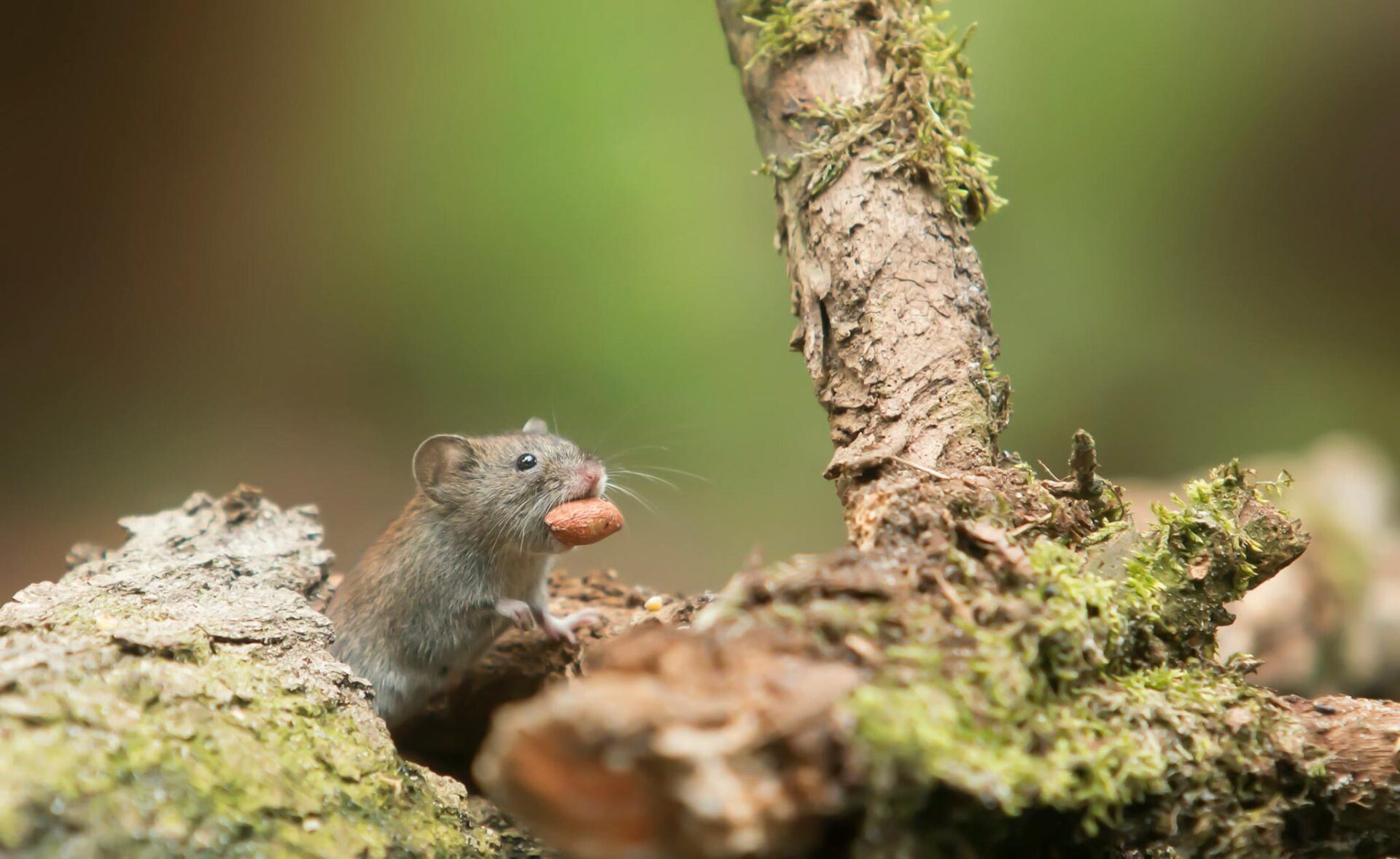House Mouse
Introduction
The House Mouse (Mus musculus) is one of the most common rodents worldwide and a frequent pest in Midwest homes, farms, and businesses, including throughout Missouri. Highly adaptable and fast-breeding, house mice thrive in human environments where food and shelter are abundant. While small in size, their potential to contaminate food, damage property, and spread disease makes them a serious concern for property owners.
Biology
House mice are small mammals measuring 2.5–4 inches (6–10 cm) in body length, with tails roughly equal in length to their bodies. They typically weigh 12–30 grams and have brown or gray fur with lighter underparts. Their large rounded ears, long scaly tails, and relatively large black eyes help distinguish them from other small rodents.
In the wild, house mice live about one year due to predation, but in protected indoor environments, they may survive up to 2–3 years.
Behavior and Ecology

House mice are highly adaptable and often live close to humans. They nest in walls, attics, basements, and cluttered storage areas using shredded paper, fabric, or dried plant materials. They are nocturnal, agile climbers, and tend to travel the same routes along walls and behind objects, leaving behind grease smears from their fur.
Signs of a house mouse infestation include:
-
-
Small, pellet-shaped droppings (about ¼ inch long) near food sources or travel paths
-
Gnaw marks on food packaging, wires, or wood
-
Scratching or scurrying noises at night
-
Nests hidden in dark, secluded spaces
-
Tiny footprints or tail marks in dusty areas
-
Unusual pet behavior (dogs or cats detecting movement behind walls)
-
Reproduction & Life Cycle
House mice reproduce at an astonishing rate. Females can produce up to 10 or more litters per year, with each litter averaging 6–8 pups. Gestation lasts just 19–21 days, and young mice reach sexual maturity at 5–6 weeks old. Without intervention, populations can grow rapidly, leading to extensive infestations.
Diet & Adaptation
House mice are omnivorous, though they prefer seeds and grains. They will readily consume fruits, insects, and human food scraps. Their small size allows them to access nearly any food source, and they can survive on minimal amounts of food and water, which contributes to their success as a pest species.
Trapping & Control
Trapping Methods
-
Snap Traps: The most effective and humane trapping option when used properly.
-
Live Traps: Allow for capture and release but must be checked frequently to avoid animal stress.
-
Glue Traps: Less humane and generally not recommended.
Trap Placement Tips:
-
Place traps along walls, behind appliances, and near droppings or gnaw marks.
-
Use multiple traps, spacing them 5–10 feet apart in areas of high activity.
-
Mice are cautious; avoid moving traps once placed.
Best Baits:
-
Peanut butter (sticky and highly attractive)
-
Chocolate
-
Seeds and nuts
-
Soft bread
Baiting Strategies
-
Use tamper-resistant bait stations if children or pets are present.
-
Place bait stations along walls or in known mouse paths.
-
Check bait daily, replacing stale or moldy bait.
-
Continue baiting until no new activity is observed for at least one week.
Exclusion & Prevention
-
Seal all gaps and holes larger than ¼ inch in walls and foundations
-
Keep food stored in airtight containers.
-
Maintain cleanliness to remove food crumbs and nesting materials.
Other Considerations
Health & Disease Considerations
Cottontails can carry zoonotic diseases:
-
Tularemia (Rabbit Fever): Wear gloves when handling rabbits; avoid sick or dead animals.
-
Ringworm: Practice good hygiene after handling wildlife.
-
Pasteurellosis: Avoid bites or scratches.
-
Leptospirosis: Avoid contaminated water or soil.
-
Toxoplasmosis: Rarely transmitted directly but possible through handling raw meat.
-
Parasites: Fleas, ticks, and mites carried by rabbits can transmit other illnesses.
Legal & Ethical Considerations
Cottontail rabbits are classified as game animals in many states. Trapping, relocation, or lethal control often requires permits. Always check local wildlife laws and follow humane practices.